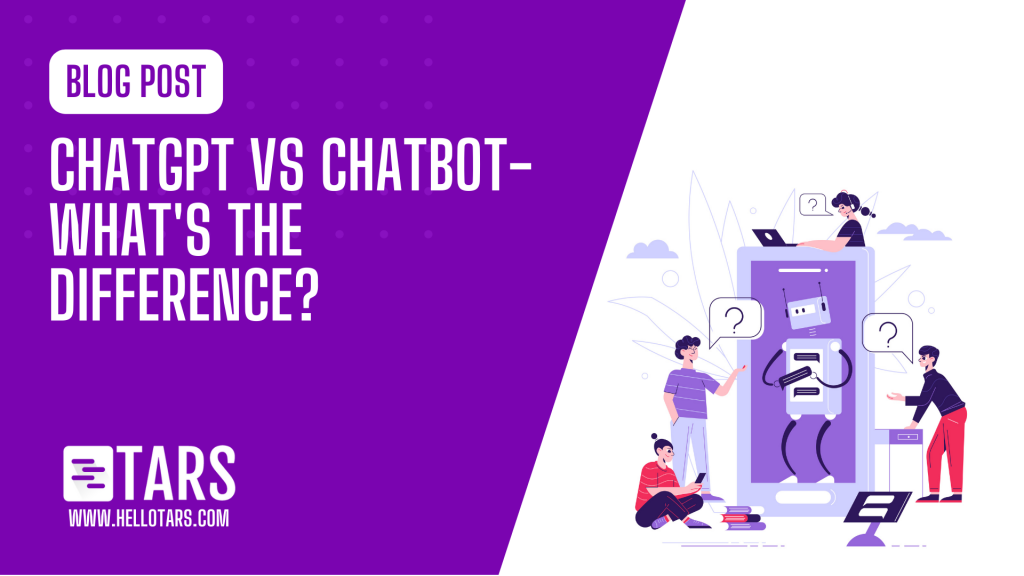In today’s digital world, two big players are grabbing attention. One is the chatbot – an old hand at giving out planned answers, known for being simple and reliable. The other is ChatGPT – a newcomer that can chat like a human and understands what you’re saying. The big question is: where should you put your money?
This is more than just picking a gadget; it affects how happy your customers are, and how your business grows. Chatbots, known for their basic chat, do tasks that usually need a person. But does being simple mean they’re the best use of your resources? On the other hand, we have ChatGPT, a new tool from OpenAI, which can write complicated messages and chat like a real person. But is this unique and clever tool worth your investment? Let’s see how chatbots and ChatGPT differ so that you can determine what might work best for you.
Chatbot vs ChatGPT: Deciding the Best Fit for Your Needs.
1. Harnessing the Power of Chatbots and ChatGPT in Your Daily Operations
Chatbots and ChatGPT are valuable tools for your daily tasks. Chatbots are great for simple jobs like collecting data and routine communication. For example, chatbots can gather emails and send notifications during a product launch.
On the other hand, ChatGPT is excellent for creating personalized content. For an email campaign, it can generate tailored messages based on a subscriber’s history. ChatGPT can create engaging posts and responses in social media that connect with your audience, building stronger relationships. To use AI for content creation and optimize your marketing, check out LongShot.ai. It saves time and boosts your effectiveness.
2. Streamlining Project Management and Content Creation with Chatbots and ChatGPT
As a technology leader, incorporating chatbots and ChatGPT into your workflow and project management can bring significant enhancements. Chatbots serve as invaluable tools for automating routine tasks, such as tracking project timelines, sending timely reminders for deadlines, and gathering status updates from team members. Chatbots facilitate consistent and timely communication by eliminating the need for manual intervention, freeing up your time for more strategic responsibilities.
On the other hand, ChatGPT’s capabilities shine when it comes to generating complex content, especially in technical domains. For instance, it can process inputs from various sources, compile comprehensive project reports, draft insightful meeting minutes, or even create detailed technical manuals based on specified specifications. This level of sophisticated content generation ensures accuracy. It enables tech leaders to delegate content creation tasks, freeing valuable decision-making and strategic planning time. Notion AI is a cool AI-powered tool that you can use to boost productivity – automate tasks, enhance writing, and generate summaries.
3. Utilizing Chatbots and ChatGPT for IT Support and Strategic Insights
Both chatbots and ChatGPT offer a wide range of applications in the realm of technology leadership. Chatbots, for instance, excel in streamlining internal processes, particularly in IT support ticket management. They can efficiently handle basic user inquiries, troubleshoot technical issues, and guide employees through self-service resources, reducing the burden on IT teams. Moreover, chatbots can be effectively utilized in customer support to providing prompt and consistent responses, addressing common queries, and offering assistance with product or service-related issues.
On the other hand, ChatGPT emerges as a powerful tool for fostering innovation and driving research in the technology field. With its ability to analyze massive datasets, generate insights, and propose creative solutions, ChatGPT has become an invaluable asset for technology leaders. It can identify patterns in user behaviour, explore new product ideas, and contribute to strategic decision-making processes. By processing and generating human-like text, ChatGPT provides valuable insights that can fuel innovation and empower technology leaders to stay ahead of the curve.
Check out ThoughtSpot Sage – an AI-powered search experience that combines GPT’s language processing with patented search technology, enabling easy access to AI-generated insights from your business data.
4. Revolutionize Business Operations with Chatbots and ChatGPT
As a business owner or entrepreneur, chatbots and ChatGPT hold tremendous potential to revolutionize your day-to-day operations. Chatbots can be deployed to automate various aspects of your business, such as streamlining appointment scheduling, managing reservations, or providing instant customer support. For example, chatbots can handle table bookings in a restaurant setting, answer FAQs about menu options or dietary restrictions, and respond promptly to customer inquiries.
ChatGPT can be a valuable asset in data analysis and decision-making processes. By processing large datasets, ChatGPT can uncover meaningful patterns, generate sales forecasts, and offer strategic insights to optimize inventory management or guide expansion plans. Whether automating routine tasks or leveraging AI-driven insights, integrating chatbots and ChatGPT into your business can enhance efficiency, improve customer experiences, and drive sustainable growth.
Try out ChatSpot, an AI-powered sales and marketing assistant combining ChatGPT with unique data sources, nurturing leads, and driving business growth in the digital era.
Unlock the Combined Potential of Chatbots and ChatGPT

What if I told you that you can get the best of both worlds?
With Tars’ newly launched product Tars Prime, you can get a chatbot powered by ChatGPT that is customized for your business and unique needs.
With Tars Prime, you get the sophistication and personalization of GPT in a chatbot that can be created and implemented within minutes.
Don’t believe me? Simply schedule a free demo and one of our experts will personally explain all the details and answer all your queries.

I am a creative thinker and content creator who is passionate about the art of expression. I have dabbled in multiple types of content creation which has helped me explore my skills and interests. In my free time, I indulge in watching animal documentaries, trying out various cuisines, and scribbling my own thoughts. I have always had a keen interest in blogging and have two published blog accounts spanning a variety of articles.

0 Comments on "ChatGPT vs Chatbot – What’s the Difference?"